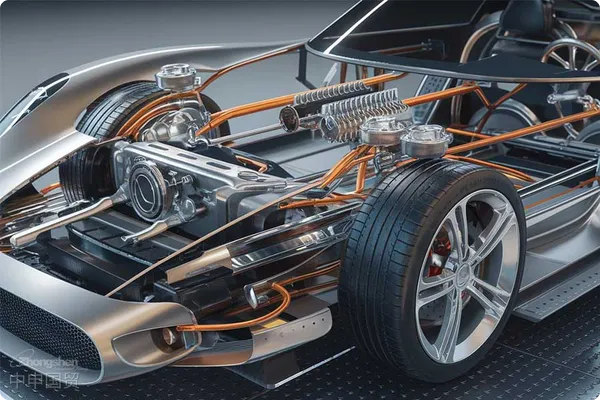- Shanghai Zhongshen International Trade Co., Ltd. - Two decades of trade agency expertise.
- Service Hotline: 139 1787 2118

——Practical Analysis from a Client Manager with 20 Years of Industry Experience
I. Industry Status: ImportsAutomotive partsMarket Opportunities and Challenges
As China's car ownership exceeds 340 million vehicles (as of 2023) andNew energyThe vehicle penetration rate has exceeded 35%, and the aftermarket demand continues to be unleashed. However, imported branded parts face three core pain points:
1.The barriers to entry are complex.: Involve3CCertification, environmental standards (such as GB/T 27630 in-vehicle air quality), and intellectual property filing
2.Supply chain fluctuations are frequent.:International LogisticsCosts have increased by 120% compared to pre-pandemic levels, while the on-time delivery rate for shipments is less than 50%.
3.Compliance risk escalation: The General Administration of Customs seized 67% more cases of infringing auto parts in 2023 compared to the previous year.
II.Import RepresentationThe Six Core Values of Service
Professional agency companies can create a 20%-35% optimization space for clients' hidden costs:
| Service modules | Key value points | Typical scenario case |
|---|---|---|
| Pre-qualification for admission | Avoid the risk of return shipment. | A German-made turbocharger was intercepted due to missing energy efficiency labeling, preventing a loss of $85,000. |
| HS code classification dispute resolution | Reduce tariff expenses | On a certain day, a Japanese suspension component saw its tariff reduced from 8% to 6% through optimization of tariff classification. |
| Supply chain finance | Working capital optimization | ApplyL/C+倉單質(zhì)押為進(jìn)口商釋放$2M流動資金 |
III. Comprehensive Risk Control Process Map (Taking EU Parts Import as an Example)
1.Product compliance phase
- Electromagnetic Compatibility Testing (ECE R10)
- REACH Regulation SVHC Substance Control (SDS + Test Report Required)
- OEM Authorization Chain Review: Complete Traceability of Authorization Documents from Tier 1 Suppliers to the Brand Owner
2.Logistics and transportation stage
- Hazardous Material Accessories: UN38.3 Certification + IMDG CODE Packaging Standards (e.g., New Energy Vehicle Battery Modules)
- Precision Instrument Transportation: ISO 13355 Vibration Testing + Constant Temperature Container Monitoring System
3.Customs clearance and delivery phase
- Dispute Resolution for Dutiable Value: Transfer Pricing Documentation Preparation + Royalty Fee Declaration Strategy
- Intellectual Property Protection: Customs Recordation Number Verification + Legitimacy Analysis of Parallel Imports (Referencing the Supreme Court's Landmark Cases of 2022)
IV. Practical Case: Crisis Management in the Import of Aftermarket Parts for a Luxury Brand
Adopted the partial shipment + overseas - warehouse transfer mode to meet the customers demand for partial pick - up in advance.: In 2022, an agent imported $1.2M worth of carbon fiber components, which were detained at the port due to three violations:
① The declared value of the goods is lower than the actual royalty payment.
② The packaging lacks Chinese warning labels.
③ It is recommended to verify through the following methods:The qualifications of the visa-issuing authority are in doubt.
72-hour response plan:
- Apply for advance release of goods by initiating a prepayment deposit (30% of the cargo value).
- Provide the brand owner's Royalty Fee calculation statement and payment proof.
- Please contact the EU Chamber of Commerce to re-certify the Certificate of Origin.
- Localization rectification: Entrust CCC-certified factories to affix Chinese labels.
Achievements: The goods will be released within 5 working days, avoiding $350,000 in demurrage losses, and establishing a long-term mechanism for cross-border tax planning in the future. Conclusion: Under the transformation of the "New Four Modernizations" in the automotive industry, professional import agents have evolved from traditional customs clearance service providers to strategic supply chain partners. Selecting service providers with deep industry expertise (such as OEM support system analysis capabilities), risk management experience (handling at least 200+ complex cases), and digital infrastructure will be key for enterprises to gain control over their import operations.
Related Recommendations
Contact Form
? 2025. All Rights Reserved. Shanghai ICP No. 2023007705-2  PSB Record: Shanghai No.31011502009912
PSB Record: Shanghai No.31011502009912









